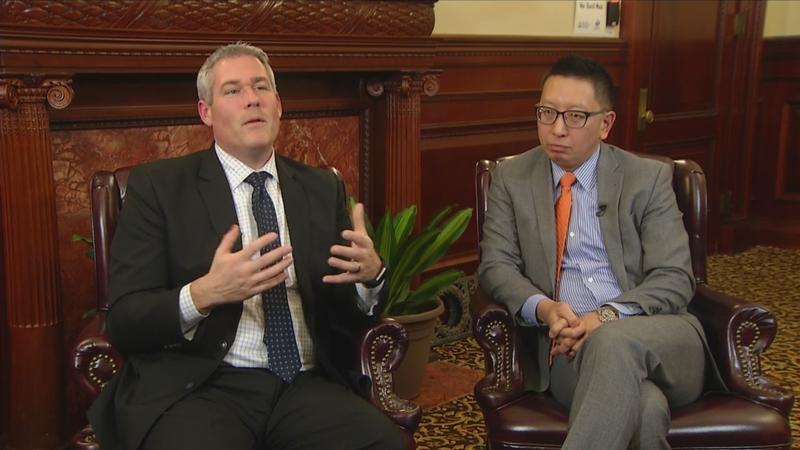Monroe County leaders mark 2 years since 1st COVID-19 case detected
[anvplayer video=”5095226″ station=”998131″]
ROCHESTER, N.Y. (WHEC) — Monroe County leaders are marking two years of struggle, controversy, tragedy and tough lessons courtesy of coronavirus.
It was exactly two years ago that the county had its first case of coronavirus.
Barely a few months into the tenure of its newly elected County Executive Adam Bello.
“Everybody was a rookie,” Bello declared. “It wasn’t just me. It wasn’t just people around here. It was just all the other leaders all over the country. It was everybody.”
In 2020, Bello was brand new but he estimates he had just as much experience as anyone dealing with a pandemic, none.

Monroe County Executive Adam Bello (left) and Public Health Commissioner Dr. Michael Mendoza (right).[News10NBC]
He and public health director Michael Mendoza say the past two years have been a series of successes and tough lessons.
"The names, the fatalities, seeing my patients who have gone through it, those patients that I’ve lost, that added to the reality of it,” Mendoza recalled. “But, early on, when it was clear to us that the volume of cases and the impact of this is going to be unbreakable that’s when it hit home for me."
These two leaders say confusion, controversy, and even protest, have underscored the importance of frank, thorough communication over key pandemic issues.
Like speculation, false starts, false hopes and disappointments, about when schools could reopen.
“You look at the feds who are saying, and the state who was saying ‘well, schools might still be open we’re going to reevaluate it in two weeks,’” Bello recalled. “I could see from the ground, here in Monroe County, it was a very strong likelihood the schools were not reopening for the school year… I could sense it. And I started saying it.”
Or the early mixed messages from the CDC about who should, or shouldn’t be getting N-95 masks.
“That didn’t sit well with most of us,” Mendoza said. “And I’ve worn N-95s all of my career. That an average person wouldn’t benefit from an N-95 just as much as a healthcare worker would… But, we had the guidelines out there, and I put that out there because it was what the CDC had recommended… Do I regret it? No. But I do now understand that I can disagree with the CDC.”
Bello said the county, the city, area communities and the health care world rose to the occasion until huge initiatives became possible, even fast.
“We had 750,000 test kits, rapid test kits, we got them out in just over a week. Because we had those relationships with the town supervisors, with the mayor, with the village leaders coming to get those out very quickly through a network. We built that.”
Thursday Bello says managing COVID has become part of what the county does, to the point it can concentrate on issues that would have been his agenda two years ago, like opioids, infrastructure or training the local workforce.
Mendoza says there are fences to mend with some still-alienated communities, and that he’ll always remember the letters he got from his own patients who wrote to him while staying home, fearful to come out.
“I lost a couple of patients, later on in the pandemic from COVID,” Mendoza said. “And I keep those letters on the little plastic thing on my desk. I had to remember at the end of the day this is about people. It’s not as policies and policymaking and purchasing things. Its people."
To those who’ve ended up somewhat skeptical after being whipsawed by shifting COVID news and suggestions, Mendoza said thank you for your patience and that scientific understanding does change and try to be understanding when it does.
The Centers for Disease Control and Prevention said as of Thursday night more than 98% of the U.S. population is in a location where the COVID community level is considered low or medium.
Monroe and Livingston are low. Wayne, Ontario, Yates and Seneca counties are all medium.